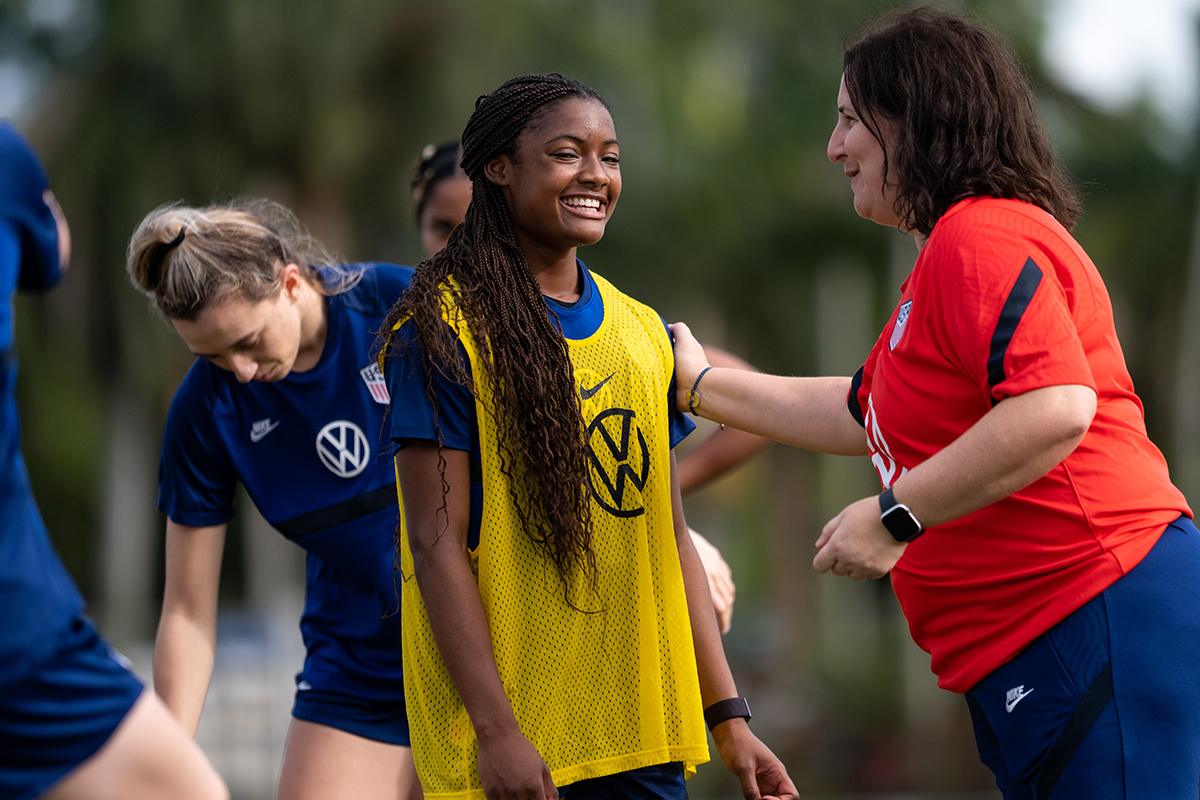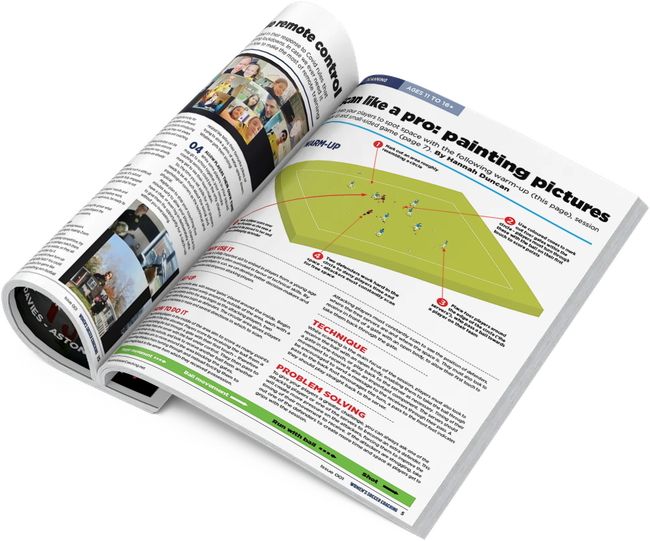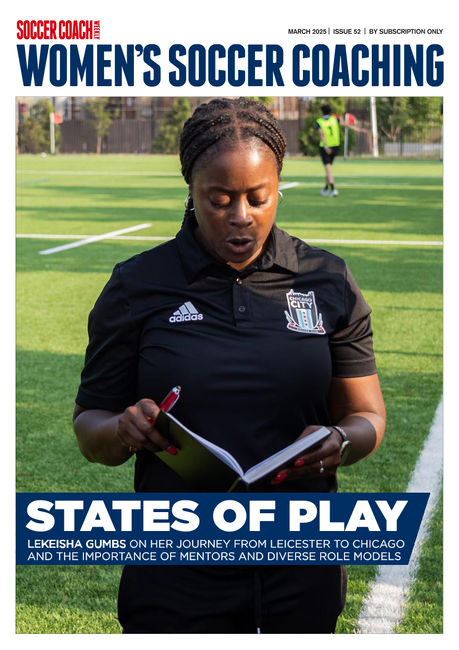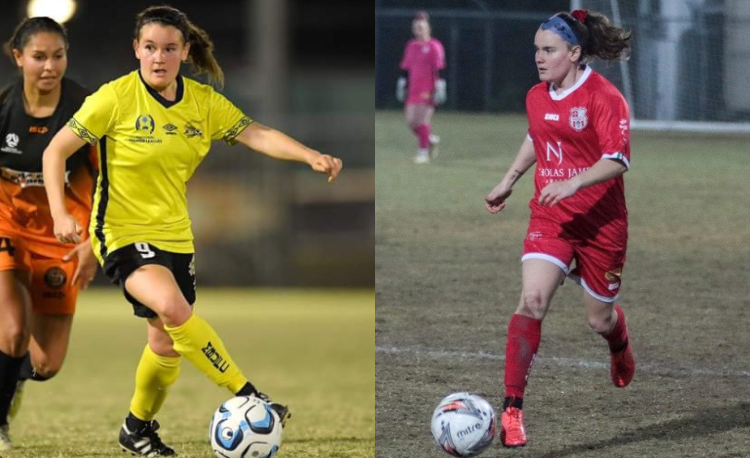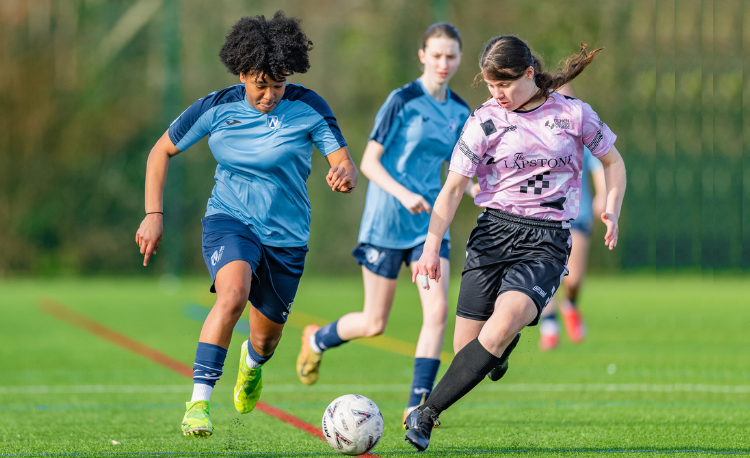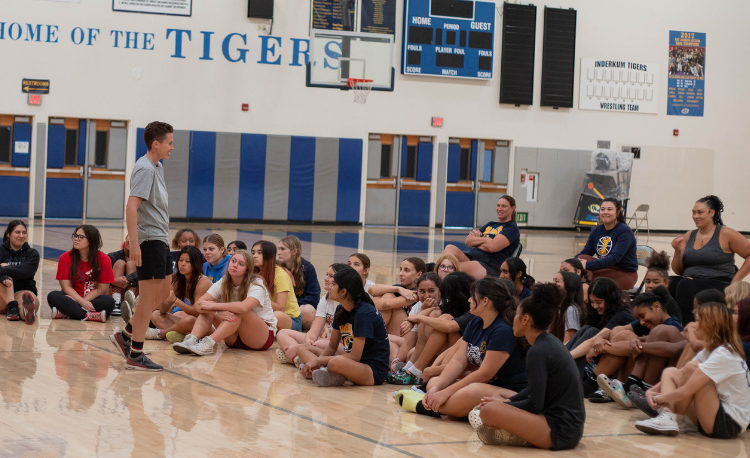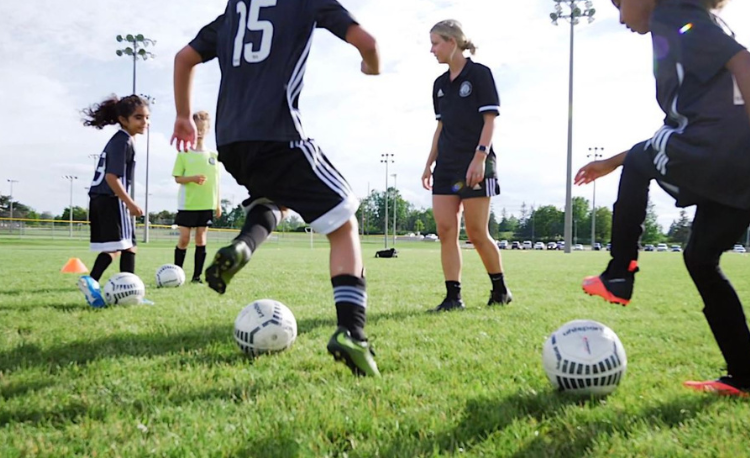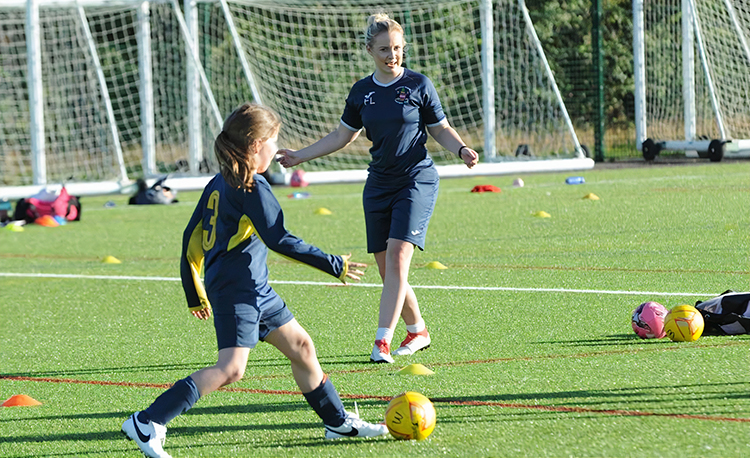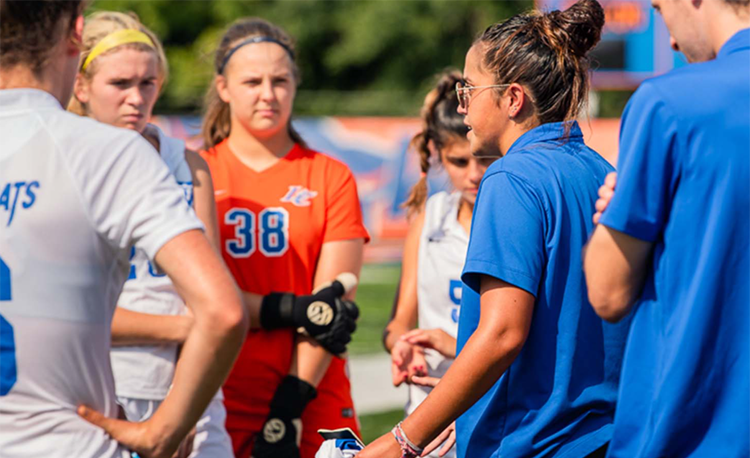You are viewing
1 of your 3 free articles
How can we keep our players and staff safe?
The latest WSC webinar discussed welfare in the women’s game. Here is what our panel said on topics ranging from safe training environments to male allies
THE WEBINAR PANEL
Steph Fairbairn (HOST) A coach originally from Newcastle-upon- Tyne, in north-east England, but now working in London.
She is FA Level 1 qualified and is head coach at Dalmain Athletic Girls FC, where she manages the Under-13s league team and coaches girls aged between 6 and 16.
Steph writes for both Soccer Coach Weekly and Women’s Soccer Coaching.
ABIGAIL INGRAM
Abigail is Club London Manager at Girls United and the assistant manager of Dulwich Hamlet FC Women, who play in tier five of the English pyramid.
Formerly Football Development Officer at Fulham FC Foundation, she is UEFA B qualified and has a degree in Sports Science from Brunel University.
ANTHONY MURRAY
Anthony is assistant manager at Stevenage FC Women and director of TAK FA Football Coaching, which offers one-to-one sessions.
He was previously the assistant coach of Charlton Athletic FC women’s under-21 team.
CLAIRE PRIDDLE
Claire is safeguarding manager at the West Ham United FC foundation and a Safeguarding Tutor for the Football Association.
She also manages the Weetabix Wildcats Centre in Southend and has a BA in Childhood and Youth Studies.
MAKING SAFETY A PRIORITY
AI: “I have to wear quite a few different hats with different age groups, so it’s understanding what players you’re working with and at what stage.
“The signs you’re looking for really varies when you’re working with five-year-olds right up to players my age, that are still playing at Dulwich Hamlet. The
safety aspects really vary in women’s football across all the age groups.
“I think the most important thing for me is making sure that the people I coach with all know their roles, who’s responsible for what parts of the training, who else is going to be on site for that group of young people.
“You can’t have it solely relying on one person. Everyone is responsible for everyone else’s safety. It doesn’t just fall on my shoulders. That would be quite a hefty weight, I reckon."
AM: “When it comes to safeguarding, it’s not a one person job - you definitely need quite a few people in your team to understand the process.
“I have been fortunate to work in certain situations being a safeguarding officer, where I have been able to train up some great coaches to make sure that
the safeguarding standards are high, and making sure they are looking after young people, whether they’re five years old, or 15 and 16, when they think they kind of know it all.
“It is definitely a job made for more than just one person, when it comes to making sure you actually follow through and maintain the standards day in, day out and week in, week out."
WELFARE OFFICERS VITAL
CP: “It’s really important to understand what is a welfare issue. If it’s to do with things like playing time and retention, a lot of people will dismiss that and say that’s not to do with welfare, it’s management and coaching. But if it’s mishandled, it’s very much to do with welfare.
“Quite often, in those sorts of cases, young people will feel like they’re not listened to. So it’s about young people knowing who their role models are that they can turn to for support and advice. It might not be their coach or manager, it might be a welfare officer.
“If they feel that they’re not being listened to, they can go and get someone to support them in being heard. There should be a designated safeguarding lead in any organisation that that young person can speak to.
“As a coach, you’re more likely to receive a disclosure from a young person because you’ve built a really good relationship with them. You’re not a school teacher, you’re not a social worker, you’re not the police, you’re not a parent - you’re somebody that’s involved in something they’re really passionate about, and you’ve got a common interest. So it’s very common that those young people reach out to you.
“It’s really important that you’ve got that support network and safeguarding leads to support and understand. At grassroots, it can be tricky because quite often they’re a parent and a volunteer. It’s about them knowing that they can go, for example, to the FA for advice and support, and it’s about making a network of people at other clubs, as well.”
HOW MEN CAN BE ALLIES
SF: “I have certainly had conversations within my club where I have had to deal with situations - maybe getting to and from training, or having to talk to someone who wasn’t welcome at training - and I have said ‘I would have really liked your backup there’ or ‘I would have liked you to stand beside me there, because I felt quite vulnerable when I was having to have that conversation’.
“A lot of it comes down to communication, whether it’s with your players about their safety, or with coaches you’re working with about the support you need.”
AM: “I have been in situations where I have had to literally switch coaches in terms of timings. I have been approached by female coaches who have said to me,
‘I want to coach this team, but I can’t because getting home is an issue for me at this time of night’.
“So I’ve spoken to coaches and made a switch, because they also understand that it’s a situation for them to get home at that time of night.
“I’m a person, I listen and I try to make sure that I support my female coaches wherever I can.”
AI: “I am quite fortunate in that I have been able to work with a lot of male allies, across different clubs and age groups.
“The most important thing for me was, when I engaged with them, I wanted to feel that trust before I let them meet my players, especially if I have met players and built that relationship before them. For example, why have we crossed paths? Why are we in the same kind of environment?
“It is just having those core values set out. For me, I think that honesty, reliability and hard work have to line up for me to then be able to feel that I can be who I want to be around them. If I can’t do that, I guess that questions my own safety.
“When it comes to males, the biggest thing for me is that they don’t make it about themselves. The people that I worked best with are those who are able to ask questions, and step in and out at the appropriate times and not make it about themselves.
“I think the best ones that I have seen do stop and start and show people, but they don’t make it about themselves. They are able to still connect and I think that is really important.
“I think having that mix of male and female coaches just shows a more fair representation of the community in positive ways.”
KNOW YOUR TRAINING OR MATCHDAY ENVIRONMENTS
AM: “I would visit that area a few days before just to gauge what it’s like, from a physical point of view - is the equipment that’s there, like goals and the pitch itself, safe, or is the area any harm to the players that I’m coaching?
“Naturally you’re always going to want everyone to be safe but I think we need to be very willing in the sense of doing those extra little bits.”
AI: “I definitely am a person that likes to go to places beforehand, just for my own awareness.
“With my Girls United hat on, those leading for us on those sessions will have a risk assessment, so you have to have a pre-visit just to know what risks you can contain and what ones might be something ongoing.
“We have sessions in open places like parks. The benefit is visibility - girls walking through the park, their parents will see us and have conversations with us which are really positive.
“But on the flip side, there are potential risks that someone can walk past and not have that friendly vibe. There’s been situations where myself or my colleagues have had to ask people what they’re doing.
“Obviously, it’s an open place, they can be there as well, but it’s just making sure that people have the right intentions, and staff know the signs and what to look for, and be in a position where in that open space, they feel that they can ask the public questions in a meaningful way that then protects the players and the young people around them.
“We’ll have some sessions where we’re the only people on site, the only ones using the football space. But we have other sessions that are next to five-a-side adults’ football and that brings its own risks, because you don’t know everyone on site. In that scenario, we make our pitches slightly smaller so there’s less crossover of young people and adults.
“At Dulwich, we have 200 fans potentially and some 16 to 18 year olds playing. You have to safeguard them, pre and post match. While coaches are setting up, it’s using the wider team of volunteers around you to be able to do that in a safe manner.”
KNOW WHEN YOU’VE DONE ALL YOU CAN TO HELP
CP: “If there’s been an incident, or a young person’s come to you and told you something, I think as long as you have listened and you’ve done something with it - you’ve got support either from within the club or externally, and you can share the information with that young person - there’s only so much you can do.
“You can help people, you can guide them and you can advise them. But you have to understand that people won’t always take that advice or guidance.
“You’ll speak to a player and you’ll have really good intentions, but maybe their family don’t share that same view, or they decide not to do something with it. It’s just about being confident that you’ve done the right thing.”
AI: “I think the best advice I had is, when you’ve escalated it and you’ve followed certain protocols, knowing that that’s now half off your shoulders.
“While you should still follow it up if you don’t hear the outcomes, it’s been to someone else - and the reason for that is because they’re in that role, and they’ve got that further expertise.
“So it’s being able to trust them that they can do their job, the same as we have to trust coaches to do their jobs and the same as we trust players to go and play the game. We have to trust the safeguarding or welfare process that will go ahead.”
AM: “I used to question myself - did I really do everything that was needed to make sure that young person was safe? I used to take that home a lot with me.
“But one of my friends said to me, as long as you follow the process and the protocols, and you’ve spoken to the right people, and you’ve had the best for the young people at heart, you’re normally on to a winner.
“I think it’s our tendency as people, as coaches, as parents to worry and think, ‘could I have done more?’. But as long as that person is safe, after the information has been expressed, then that is the main thing.”
Related Files
Newsletter Sign Up
Newsletter Sign Up
Discover the simple way to become a more effective, more successful soccer coach
In a recent survey 89% of subscribers said Women's Soccer Coaching makes them more confident, 91% said Women's Soccer Coaching makes them a more effective coach and 93% said Women's Soccer Coaching makes them more inspired.
*includes 3 coaching manuals
Get Inspired
All the latest techniques and approaches
Women's Soccer Coaching offers proven and easy to use soccer drills, coaching sessions, practice plans, small-sided games, warm-ups, training tips and advice.
We've been at the cutting edge of soccer coaching since we launched Soccer Coach Weekly in 2007, creating resources for the grassroots youth coach, following best practice from around the world and insights from the professional game.
